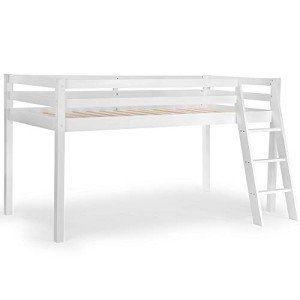Bunk Beds for Kids: A Comprehensive Guide
Bunk beds have been a popular choice for kids's bed rooms for many years. They provide a space-saving option that optimizes floor location, provides enjoyable climbing up choices, and can be found in a range of styles that interest kids's imaginations. This short article checks out the benefits, considerations, designs, and safety functions connected with bunk beds for children.
Advantages of Bunk Beds
Bunk beds present multiple advantages that make them an attractive alternative for households. Here are some crucial benefits:
Space Saving
- Bunk beds enable 2 or more kids to share a space without sacrificing space for play or other activities.
Cost-efficient
- Acquiring a single bunk bed can be more affordable than buying two different beds.
Fun Factor
- Kids typically see bunk beds as an enjoyable location to sleep and play, fostering a sense of adventure.
Versatility
- Bunk beds are offered in different configurations, consisting of L-shaped, loft beds, and even convertible styles that can alter as kids grow.
Organization
- Lots of bunk beds feature built-in storage choices, such as racks and drawers, assisting keep spaces arranged.
Key Considerations Before Purchasing
Before purchasing a bunk bed, it's vital to consider certain factors, such as:
- Space Requirements
Procedure the space to ensure that there is enough vertical space, enabling for appropriate headroom on the top bunk. - Age of Your Children
Consider their age and maturity. Numerous producers suggest that children under six need to not oversleep the leading bunk due to security concerns. - Weight Limit
It's important to check the weight limitations of the bunk bed for both the leading and bottom bunks to make sure safety. - Design Preferences
Pick a style that matches the space's decoration and the kids's preferences. - Material
Bunk beds are available in numerous materials, such as wood or metal. Each has its benefits and disadvantages relating to durability and aesthetics.
Designs of Bunk Beds
Bunk beds can be found in various styles to fit different aesthetic appeals and functional needs. Here's a list of some popular designs:
- Standard Bunk Beds
Traditional stacked beds that consist of two beds developed one above the other. - Loft Beds
A bed elevated high off the ground, with space beneath for a desk, play area, or storage. - L-Shaped Bunk Beds
Two beds set up in an L-shape, providing more flooring space and a special design element. - Twin Over Full Bunk Beds
These choices include a twin bed on top and a full-sized bed on the bottom, accommodating older kids or adults. - Triple Bunk Beds
Designed for 3 kids, these beds typically include three stacked beds, suitable for bigger families.
Safety Features to Consider
Guaranteeing the safety of kids using bunk beds is vital. Here are some security includes to search for before purchasing:
- Guardrails
A bunk bed should include tough guardrails on the top bunk to prevent accidental falls. - Ladders
Guarantee that the ladder is firmly connected and easy for kids to browse safely. - Stability
Look for bunk beds with lower center of mass and broad bases to offer much better stability. - Quality Construction
Choose beds made from resilient products that meet security standards, such as ASTM (American Society for Testing and Materials) policies.
FAQs About Bunk Beds
1. What age is appropriate for a top bunk?Generally, kids aged six and older are suggested for oversleeping the leading bunk. 2. Are bunk beds safe for toddlers?Most specialists recommend against
placing young children in the leading bunk due to the
danger of falls and inappropriate ladder usage. 3. Can bunk beds be separated?Many bunk beds are developed to be separated into two standalone beds,
supplying included flexibility as children grow
. 4. How do I maintain a bunk bed?Regularly check for loose screws and use, keep bed mattress tidy, and ensure that the bunk bed is
steady to lengthen its lifespan. 5.
Are there any unique mattress requirements for bunk beds?Yes, bed mattress for bunk beds ought to fit comfortably without leaving spaces. Typically, thinner bed mattress
(around 6 to 8 inches )are suggested for leading bunks for security. Bunk Beds Cheap provide a flexible, useful, and fun solution for children's sleeping plans, maximizing space while accommodating multiple kids in one room. By thinking about the essential aspects
of design, security, and space, parents can make an informed choice when choosing the right bunk bed for their children's needs. With the best care and maintenance, a bunk bed can be a cherished piece of furniture that provides years of usage and enjoyment for kids. Summary Table of Bunk Bed Styles Style Description Best For Requirement Bunk Beds Timeless style, two stacked beds Smaller spaces Loft Beds Raised bed with open space below Research study or play areas L-Shaped Bunk Beds 2 beds in an L-shape
Added flooring space Twin Over Full Twin on the top,
| full on bottom Accommodating older children Triple | ||||||
|---|---|---|---|---|---|---|
| Bunk Beds | 3 stacked beds | Larger families By understanding | the various alternatives readily available, designated considerations for security and performance, and appropriate age standards, families | can choose the best bunk bed that not | just boosts their living space | however likewise makes sure a safe and |
| pleasurable sleeping environment | for their kids.

|
